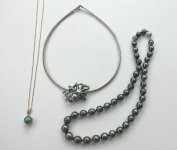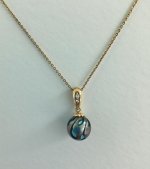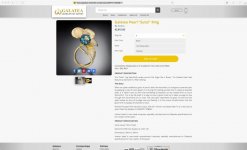PaulaPaints
Member
- Joined
- Aug 31, 2018
- Messages
- 12
I hope I am not over- stepping as a “ newbie” here, but wanted to share a pic of my small collection of T’s. The first on left is a Galatea pendant with turquoise nucleus, it was my very first T. The second middle piece is a Stephen Douglas rhodium octopus slide. The last strand is from PP. I do also have a couple pairs of T earrings which I forgot to put in here, just simple drops. I love these pieces, Tahitians are my favorites,




